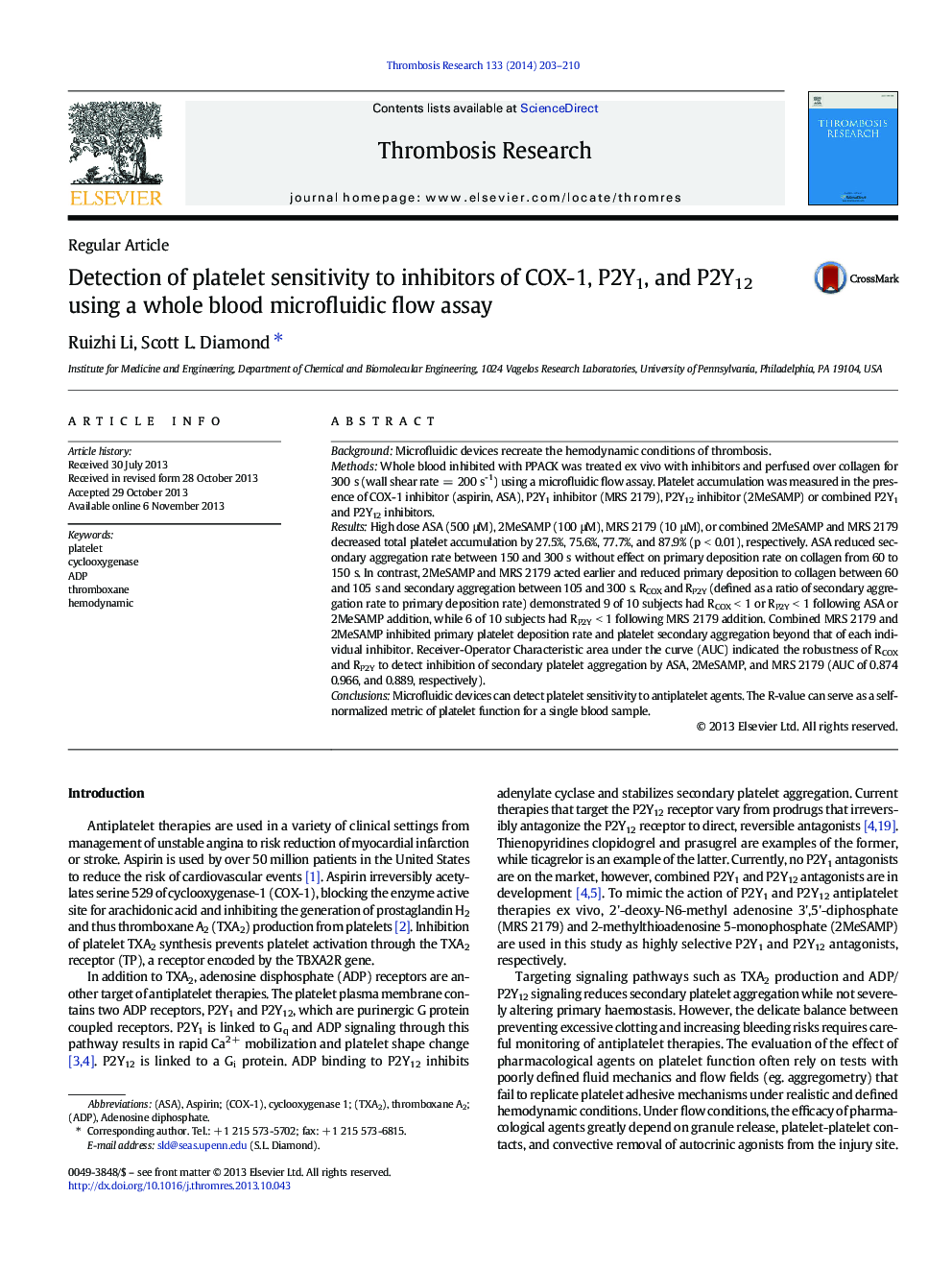| Article ID | Journal | Published Year | Pages | File Type |
|---|---|---|---|---|
| 6001497 | Thrombosis Research | 2014 | 8 Pages |
BackgroundMicrofluidic devices recreate the hemodynamic conditions of thrombosis.MethodsWhole blood inhibited with PPACK was treated ex vivo with inhibitors and perfused over collagen for 300 s (wall shear rate = 200 s- 1) using a microfluidic flow assay. Platelet accumulation was measured in the presence of COX-1 inhibitor (aspirin, ASA), P2Y1 inhibitor (MRS 2179), P2Y12 inhibitor (2MeSAMP) or combined P2Y1 and P2Y12 inhibitors.ResultsHigh dose ASA (500 μM), 2MeSAMP (100 μM), MRS 2179 (10 μM), or combined 2MeSAMP and MRS 2179 decreased total platelet accumulation by 27.5%, 75.6%, 77.7%, and 87.9% (p < 0.01), respectively. ASA reduced secondary aggregation rate between 150 and 300 s without effect on primary deposition rate on collagen from 60 to 150 s. In contrast, 2MeSAMP and MRS 2179 acted earlier and reduced primary deposition to collagen between 60 and 105 s and secondary aggregation between 105 and 300 s. RCOX and RP2Y (defined as a ratio of secondary aggregation rate to primary deposition rate) demonstrated 9 of 10 subjects had RCOX < 1 or RP2Y < 1 following ASA or 2MeSAMP addition, while 6 of 10 subjects had RP2Y < 1 following MRS 2179 addition. Combined MRS 2179 and 2MeSAMP inhibited primary platelet deposition rate and platelet secondary aggregation beyond that of each individual inhibitor. Receiver-Operator Characteristic area under the curve (AUC) indicated the robustness of RCOX and RP2Y to detect inhibition of secondary platelet aggregation by ASA, 2MeSAMP, and MRS 2179 (AUC of 0.874 0.966, and 0.889, respectively).ConclusionsMicrofluidic devices can detect platelet sensitivity to antiplatelet agents. The R-value can serve as a self-normalized metric of platelet function for a single blood sample.
